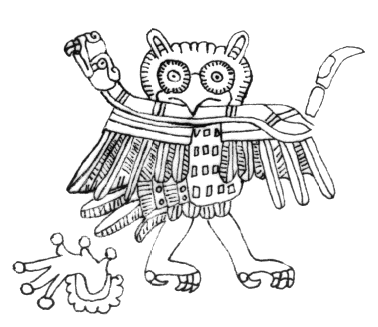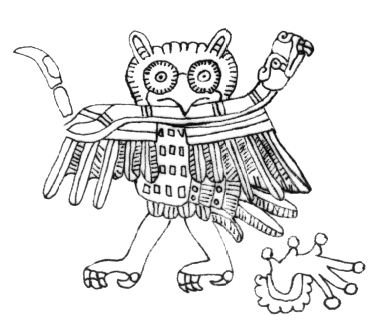On Hannah Arendt's Heidegger the Fox

ハイデガーの狐:解釈編
On Hannah Arendt's Heidegger the Fox

池田光穂
※このページは解説編です:はじめて飛び込んだ人はオリ
ジナル(課題学習)ページに戻ってください!
課題
下記の文章を読んで、ハイデガーの思想というものが
アーレントによってどのように表現されているのか。みんなで議論してみよう!
物語(これは、冒頭の文章が省略されており、いきな り物語から入ります)
「む かしむかし、一匹の狐がおりました。この狐(= ハイデガーキツネ)はずる賢さがひどく不足していたので、いつも罠にかかっていました。いや、それだけでなく、罠と罠でないものとの区別をつけることさえ できなかったのです。
こ の狐には、ほかにも困っていることがありました。 毛皮にいたんでいるところがあったので、狐の生活につきもののいろいろなつらいことに対する生まれながらの保護がまったく受けられなかったのです。人間た ちが仕掛けた罠のまわりをうろうろすることで若い時代を費やした後には、この狐の毛皮にはいたんでいないところはまったくなくなったといってもいいくらい になってしまいました。
そ こで狐は、狐の世界からすっかり身を引いて、自分 だけのための巣穴を掘ろうと決めました。罠については信じられないほどあれこれさまざまな経験をしてきたにもかかわらず、罠と罠でないものとの違いがびっ くりするほどわかっていなかったので、この狐は、狐たちのあいだでも誰も聞いたことのないまったく新しい考えを思いつきました。狐は、自分の巣穴として一 つの罠をつくりました。狐はそのなかに入って、ふつうの巣穴だといわんばかりにすずしい顔をしていました。それは、悪知恵からしたのではなく、ほかの罠は ほかの狐の巣穴だとかねがね思っていたからでした。
さ らに狐は、自分なりにずる賢くなり、自分でつくっ て自分だけにぴったりする罠をほかの狐たちのために用意することにしました。これはまたしても罠というものがまったくわかっていないことを証明するもので した。この狐の罠にかかるものなど誰もいませんでした。なぜなら罠のなかには、ほかでもない、この狐自身がいたのですから。これには狐もいらいらしまし た。誰もが知っているように、いくらずる賢いといっても、やっぱりどんな狐でもちょくちょく罠にかかるものだからです。狐の罠ーーとりわけ罠に関してはほ かの誰よりも経験豊富な狐がつくった罠——が、どうして人間や猟師のつくった罠にかなわないなんてことがあるでしょうか。
そ うか、この罠が罠であるってことがわかるように はっきり見えなかったからだ! そこで、私たちの狐は、罠をきれいに飾りたて、「みなさま、こちらへおいでください。これは罠、それも世界で一番きれいな 罠です」と麗々しく書いであって見間違えようのない標識を罠のうえのそこら中にかけようと思いついたのです。それからというもの、この罠に間違って狐が迷 い込むはずがないことは誰の眼にも明らかでした。
と ころがそれにもかかわらず、たくさんの狐がやって きたのです。というのも、この罠は私たちの狐の巣穴だったわけで、この狐が自分の家でくつろいでいるところを訪ねたいならば、罠に足を踏み入れなければな らなかったからです。
もちろん、私たちの狐を除けば、誰もがそこからまた
出てくることができました。罠は、この狐の大きさにぴったりに掘られていたのです。けれども、その罠で暮らしている狐(=ハイデガーキツネ)は誇らしげに
いいました。「とてもたくさんの狐がボクの罠を訪ねてきてくれるので、ボクはありとあらゆる狐のなかでも最高の狐になった」。まあ、そこには幾ばくかの真
実もあるのです。罠とは何であるかを一生まるまる罠のなかにいるものよりもよく知っているものは誰もいないのです」。
原文:Heidegger the Fox - Hannah Arendt
Heidegger says,
with
great pride: "People say that Heidegger is a fox." This is the true
story of Heidegger the fox: Once upon a time there was a fox who was so
lacking in slyness that he not only kept getting caught in traps but
couldn't even tell the difference between a trap and a non-trap. This
fox suffered from another failing as well. There was something wrong
with his fur, so that he was completely without natural protection
against the hardships of a fox's life. After he had spent his entire
youth prowling around the traps of people, and now that not one intact
piece of fur, so to speak, was left on him, this fox decided to
withdraw from the fox world altogether and to set about making himself
a burrow. In his shocking ignorance of the difference between traps, he
hit on an idea completely new and unheard of among foxes: He built a
trap as his burrow. He set himself inside it, passed it off as a normal
burrow—not out of cunning, but because he had always thought others'
traps were their burrows—and then decided to become sly in his own way
and outfit for others the trap he had built himself and that suited
only him. This again demonstrated great ignorance about traps: No one
would go into his trap, because he was sitting inside it himself. This
annoyed him. After all, everyone knows that, despite their slyness, all
foxes occasionally get caught in traps. Why should a fox
trap—especially one built by a fox with more experience of traps than
any other—not be a match for the traps of human beings and hunters?
Obviously because this trap did not reveal itself clearly enough as the
trap it was! And so it occurred to our fox to decorate his trap
beautifully and to hang up equivocal signs everywhere on it that quite
clearly said: "Come here, everyone; this is a trap, the most beautiful
trap in the world." From this point on it was clear that no fox could
stray into this trap by mistake. Nevertheless, many came. For this trap
was our fox's burrow, and if you wanted to visit him where he was at
home, you had to step into his trap. Everyone except our fox could, of
course, step out of it again. It was cut, literally, to his own
measurement. But the fox who lived in the trap said proudly: "So many
are visiting me in my trap that I have become the best of all foxes."
And there is some truth in that, too: Nobody knows the nature of traps
better than one who sits in a trap his whole life long.
註釈
翻訳は、山田正行による『アーレント政治思想集成
2』みすず書房、Pp.190-192. ただし、これの原出典は、2002年刊行のDenktagebuch: Bd. 1: 1950-1973.
Bd. 2: 1973-1975の、1953年の記載。
文献
--------------------------------------------
Copyleft, CC, Mitzub'ixi Quq Chi'j, 1996-2099
Do not copy and paste, but you might [re]think this message for all undergraduate students!!!



